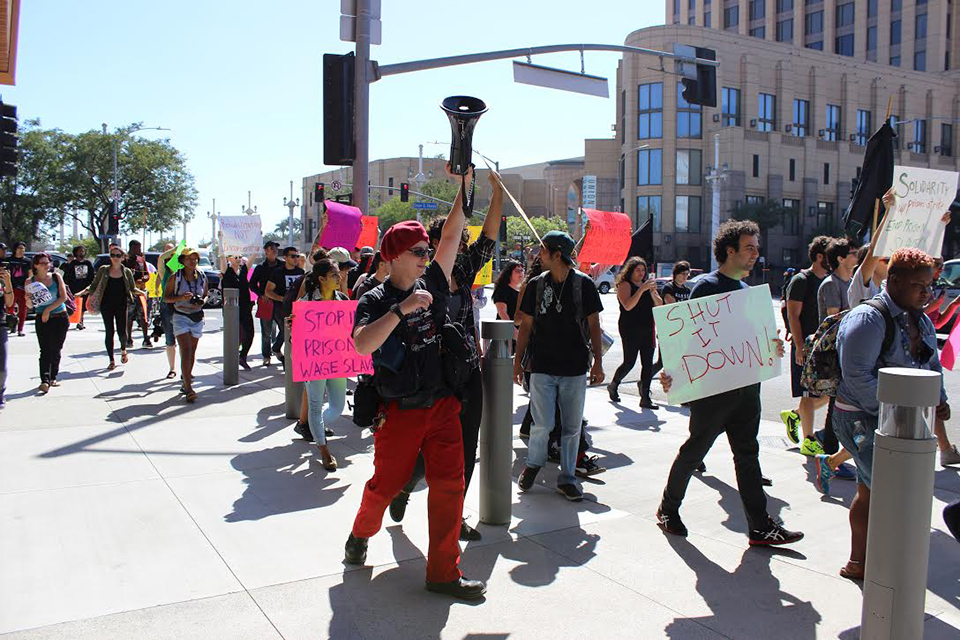Political activists and prison abolitionists congregated near the Twin Towers Correctional Facility in Los Angeles on Sept. 9, 2016 to stand in solidarity with prisoners protesting against mass incarceration and poor living conditions. The peaceful protest outside the prison and the unobservable strike within the facility was an attempt to create the largest nationwide prison strike on the 45th anniversary of the infamous and bloody 1971 Attica Prison uprising. The struggle for racial reconciliation and a more equal and fair democracy can never be achieved if the United States does not end mass incarceration and inhumane prison labor.
Inhumane treatment
The Attica prison uprising is one of the bloodiest and most violent episodes of American history. On Sept. 9, 1971, inmates at the state prison in a small town in New York rebelled against the prison guards and occupied the prison courtyard in order to voice their grievances and inhumane treatment. Prisoners were regularly subjected to beatings and received inadequate access to toilet paper and soap. After negotiations disintegrated, state troopers and the police force brutally massacred the mostly Black and Hispanic population through the use of CS gas and firearms to subdue the prison strike.
The nationwide prison strike on Sept. 9, 2016 was a call to redress the grievances petitioned by the American prison population and to educate others on the inhumane nature of prison labor and mass incarceration. These prisoners are asking the state to treat them humanely instead of like animals.
The way the United States deals with crime and punishment is cruel and inhumane.
According to the US Bureau of Justice Statistics, the United States has an incarcerated population of over two million people. It is important to note the American population makes up 5 percent of the world’s population and 25 percent of the world’s prison population. Forty-five years after the Attica prison uprising, we as citizens, should all examine and learn about Attica and present struggles instead of succumbing to historical amnesia or monotonously repeating the mantras so common in our whitewashed history of civil rights and racial struggles.
Cultivating a more equal society
Michelle Alexander, a law professor at Ohio State University, wrote in her book — “The New Jim Crow: Mass Incarceration in the Age of Colorblindness” — on how the War on Drugs and a broken criminal justice system destroyed black communities. According to Alexander, “No other country in the world imprisons so many of its racial or ethnic minorities as the U.S.”
A recent illustrated article by Sofie Louise Dam creatively shows the racial inequalities and institutional racism that still exists in the American prison system. The fact that we have prisons such as the Louisiana State Penitentiary — a facility still contracting out cheap prison labor to corporations — is almost as disturbing as the fact the aforementioned prison was a former cotton plantation using slave labor during the Civil War. Not much has changed since then. The Thirteenth Amendment of the United States outlaws slavery except “as punishment for crime whereof the party shall have been duly convicted.”
The solidarity protest I witnessed in L.A. last Friday was the collective expression of people wanting to cultivate a more equal society. I saw how protesters raised their fists and held up signs as police officers solemnly watched in the distance — one with an assault rifle in his hand.







